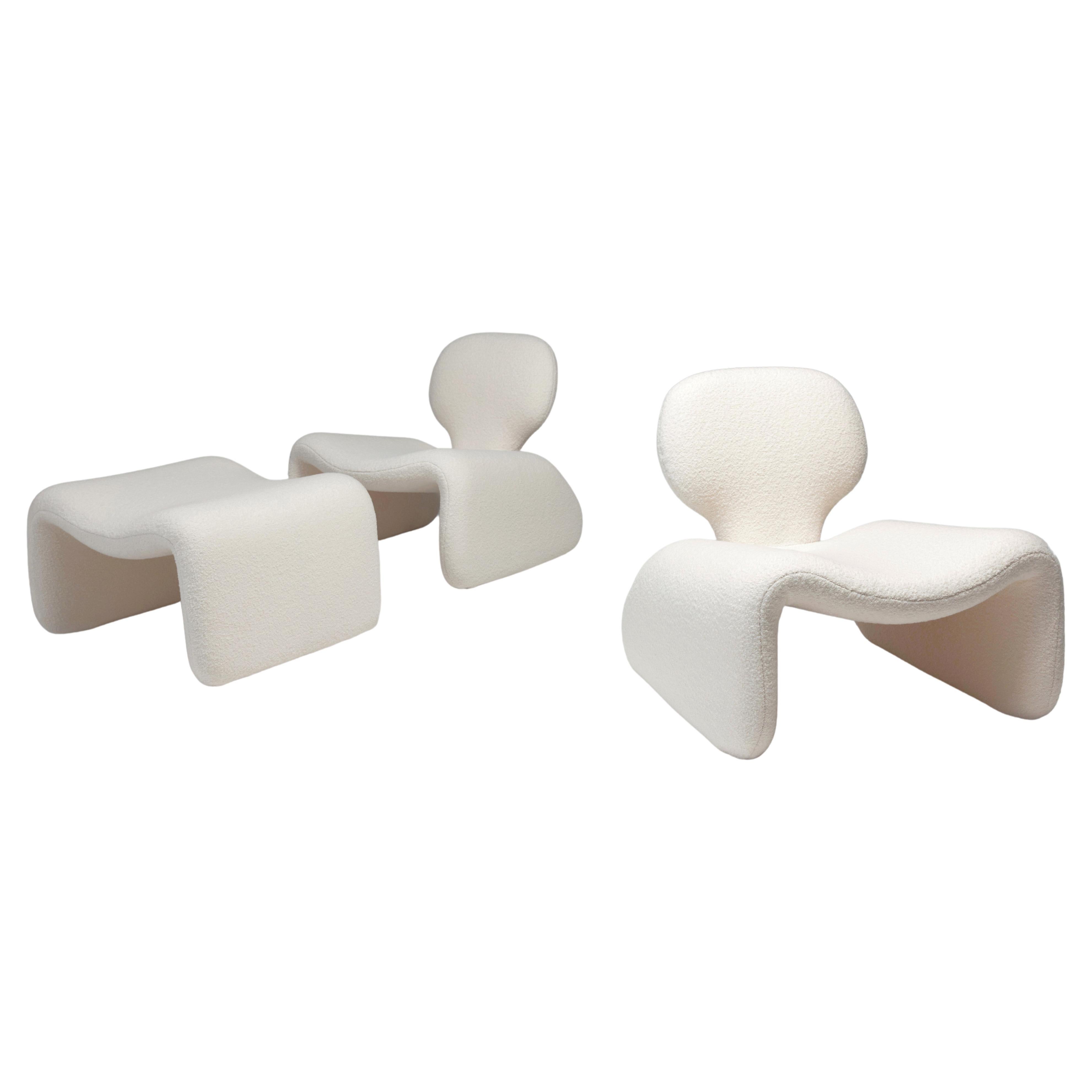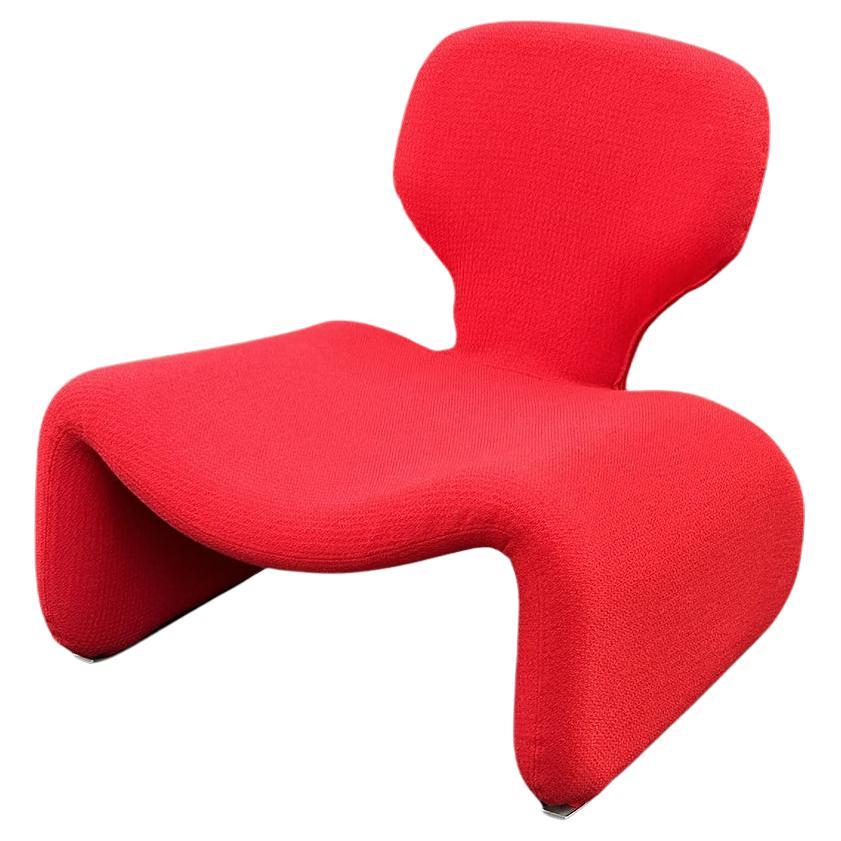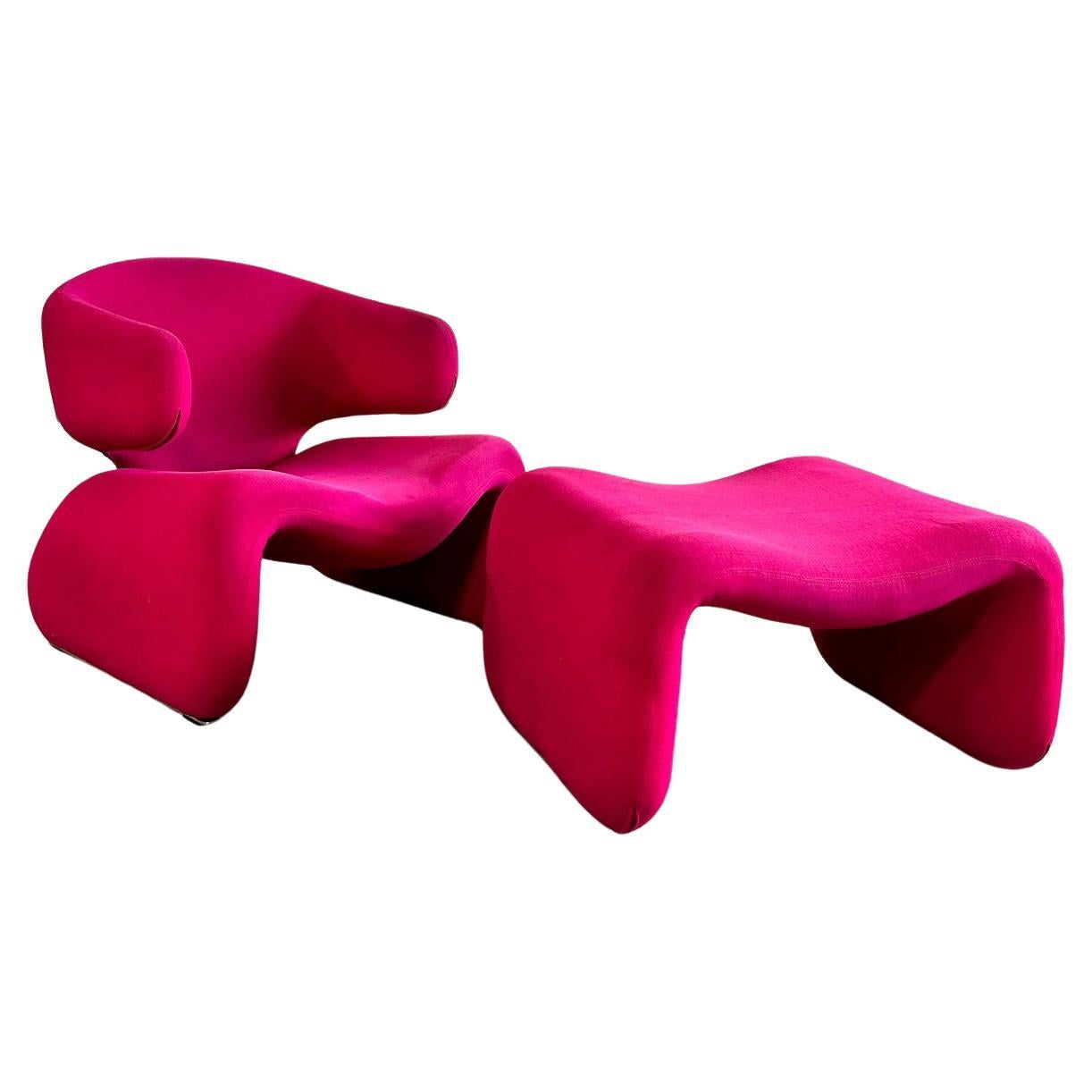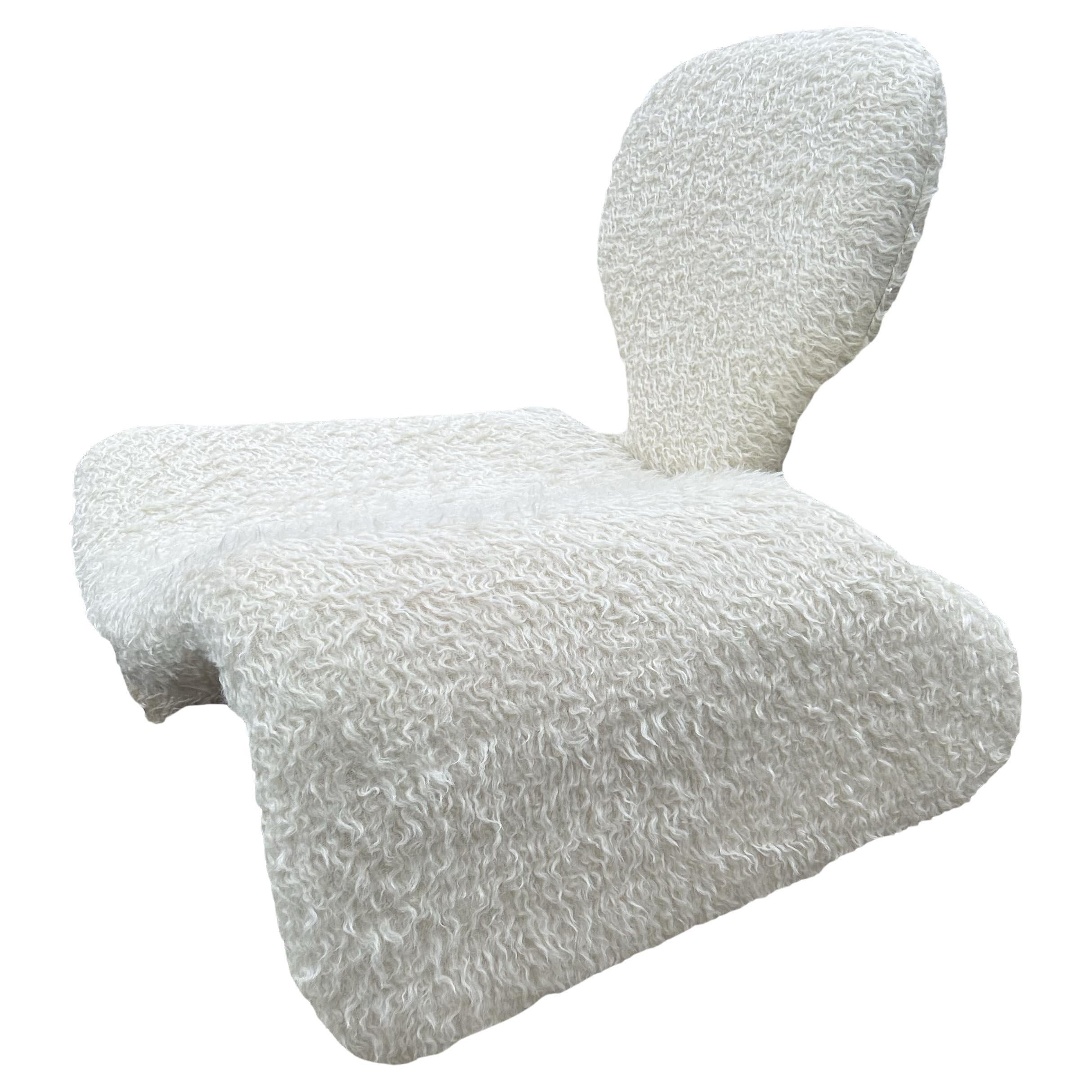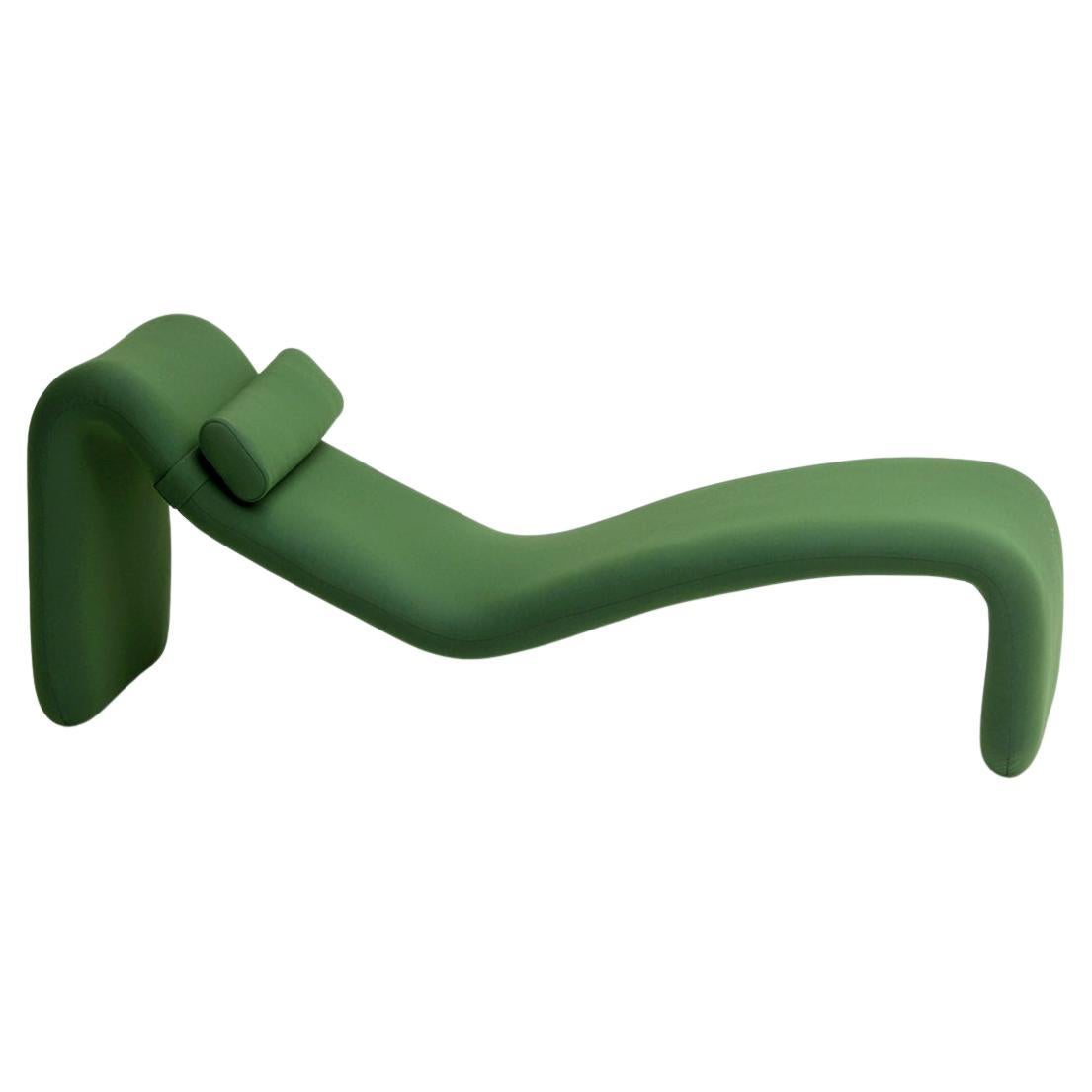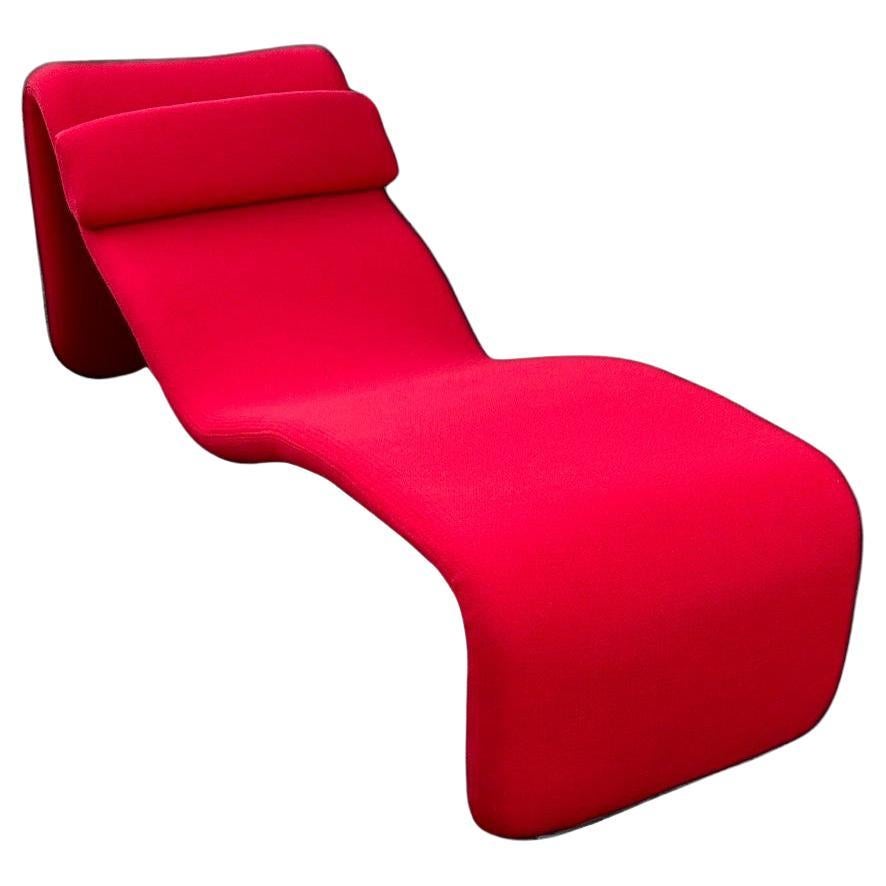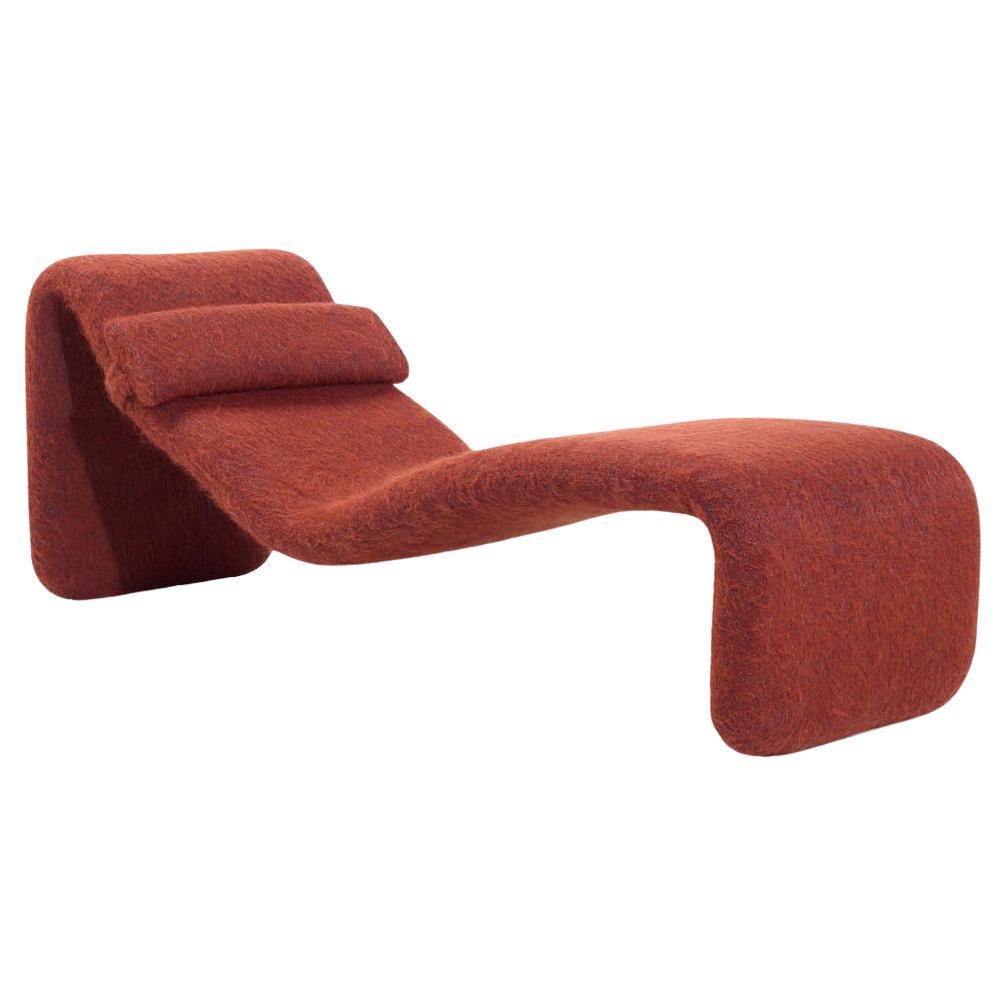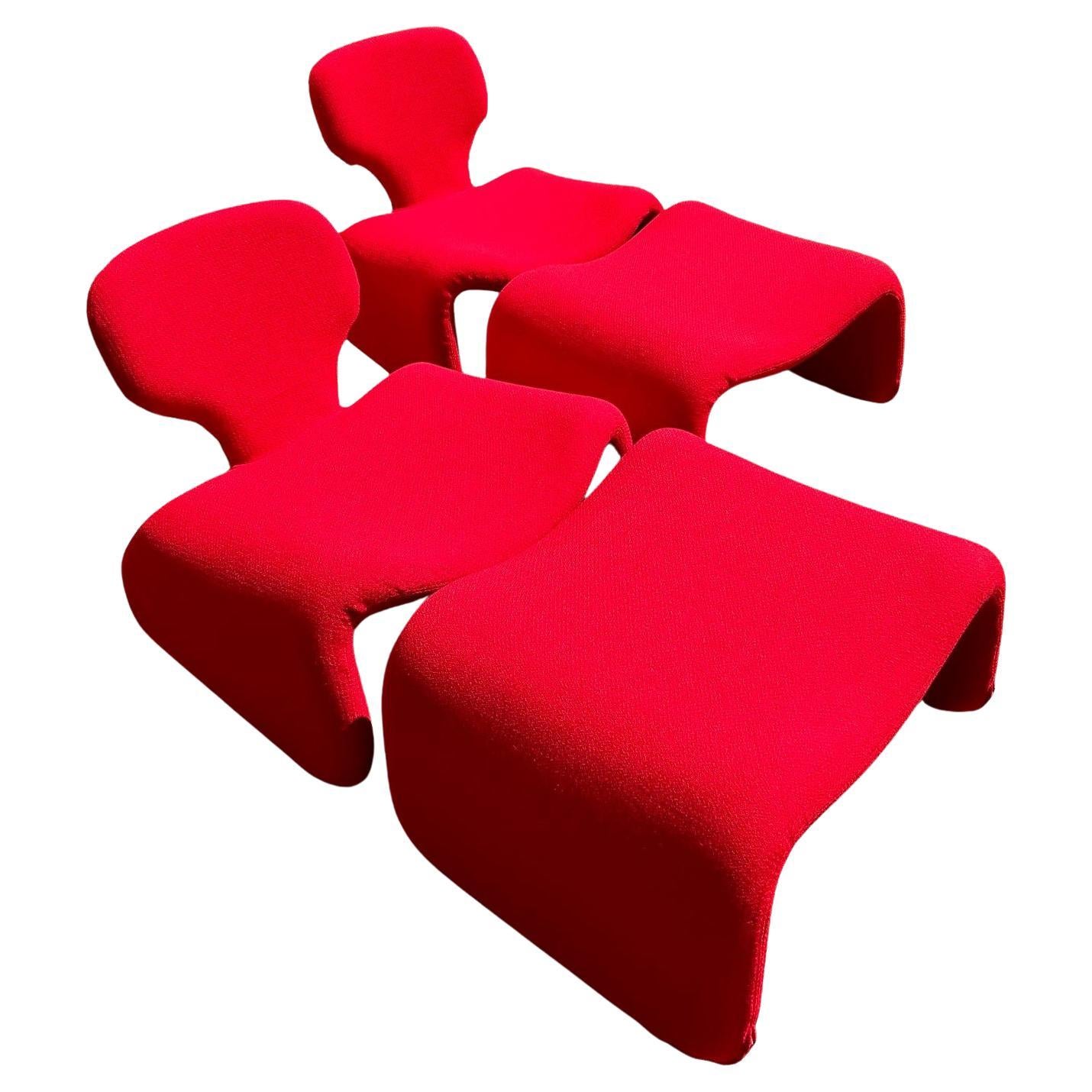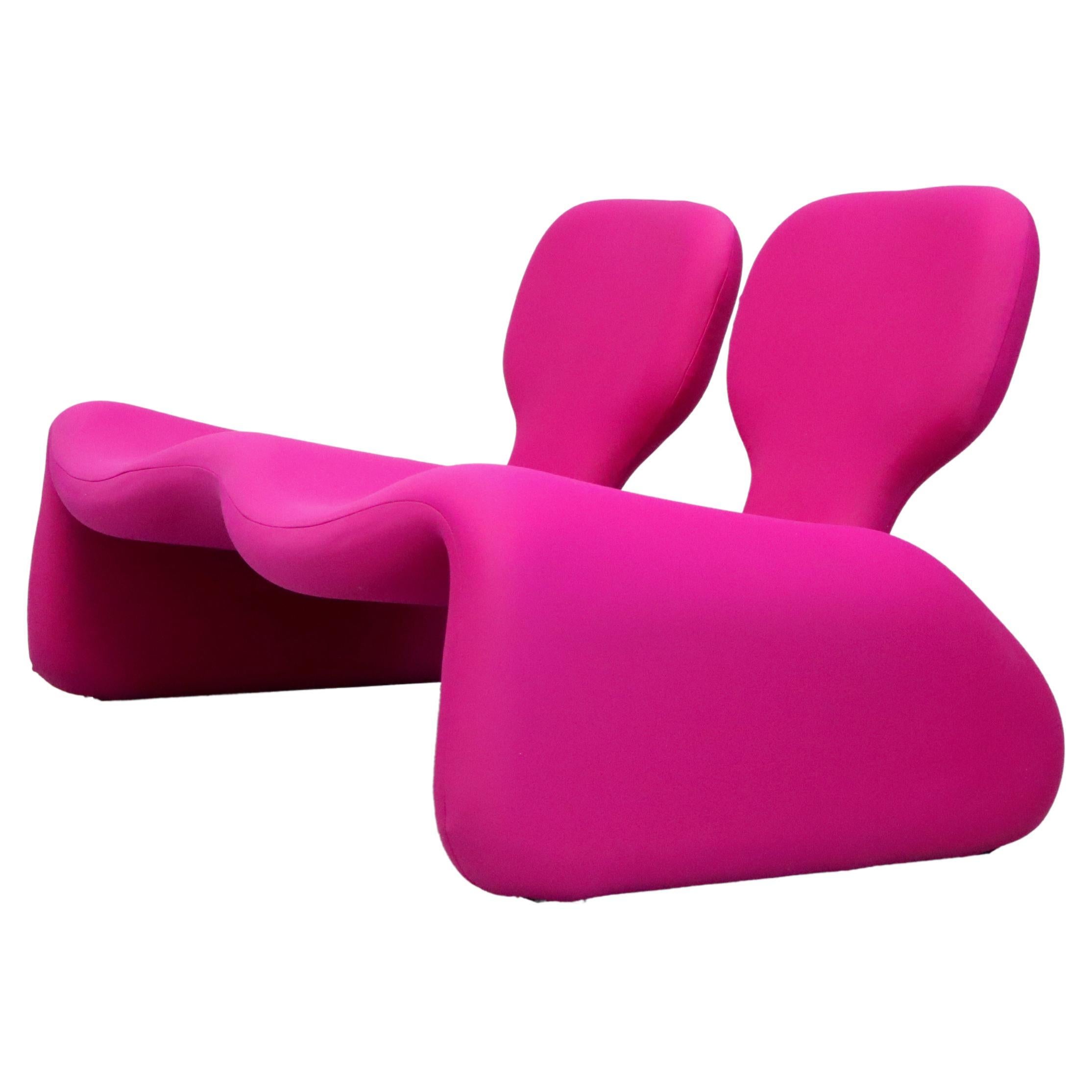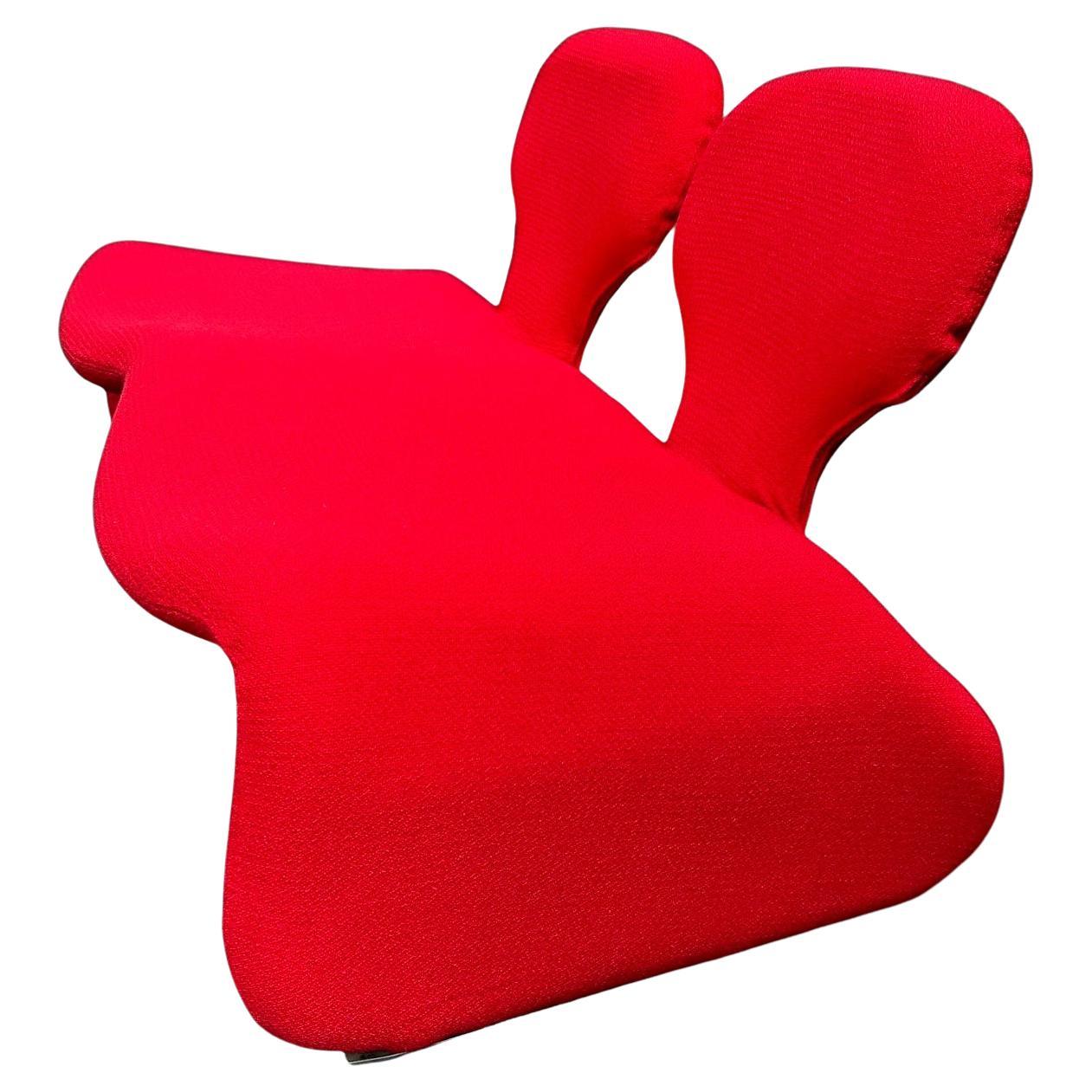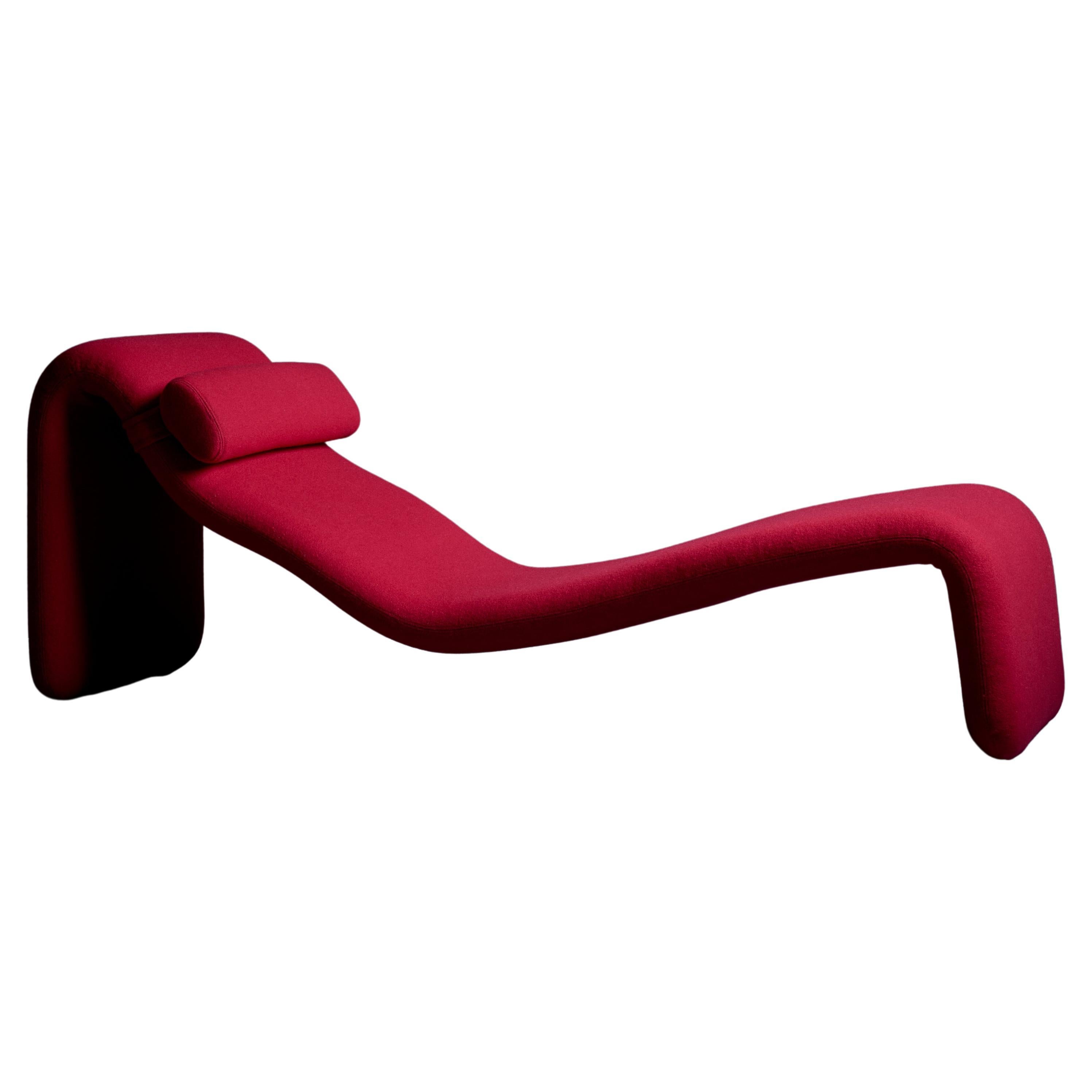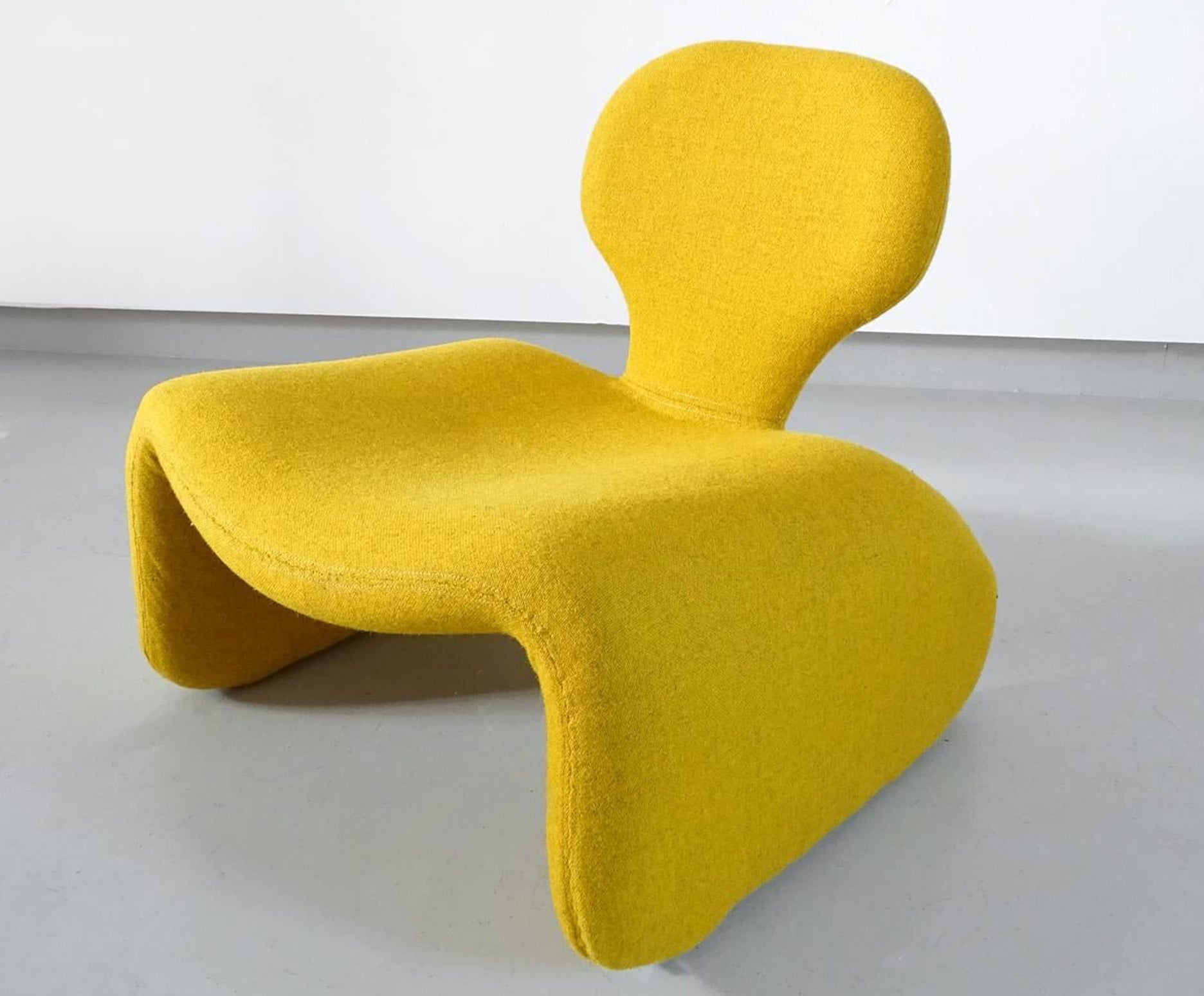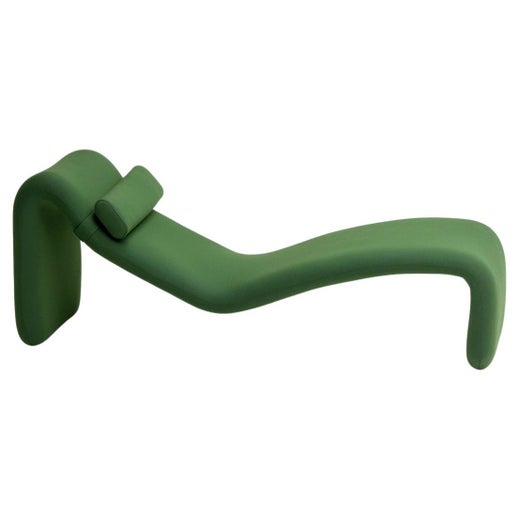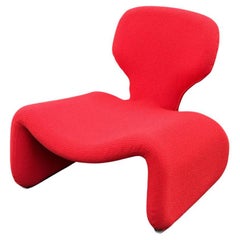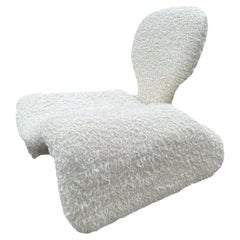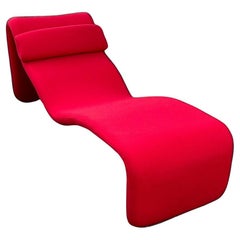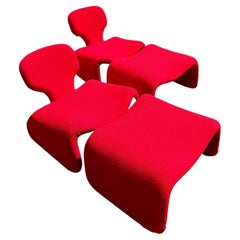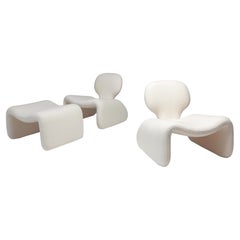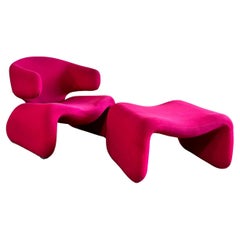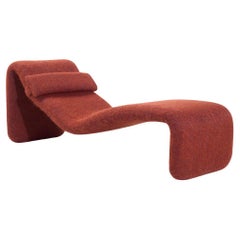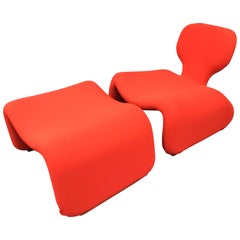
Djinn Chair and Ottoman by Olivier Mourgue for Airborne
View Similar Items
Djinn Chair and Ottoman by Olivier Mourgue for Airborne
About the Item
- Creator:Airborne (Manufacturer),Olivier Mourgue (Designer)
- Design:
- Dimensions:Height: 27.17 in (69 cm)Width: 27.56 in (70 cm)Depth: 25.99 in (66 cm)Seat Height: 13.39 in (34 cm)
- Sold As:Set of 2
- Style:Mid-Century Modern (Of the Period)
- Materials and Techniques:
- Place of Origin:
- Period:
- Date of Manufacture:circa 1968
- Condition:
- Seller Location:Little Burstead, GB
- Reference Number:1stDibs: LU210035783103
Djinn Chair
The Djinn chair appeared so futuristic when it debuted in 1964 that red versions were used as space station seating in Stanley Kubrick’s 1968 film 2001: A Space Odyssey. Created by French designer Olivier Mourgue (b. 1939), the low-slung lounge chair — named for the shapeshifting djinn, or spirits, that appear in the Koran — has an undulating seat that appears as if it were folded from a single piece of material. The illusion is an effect of its assembly, which sees curved tubular steel covered with urethane foam and jersey fabric. Despite its imposing presence, the chair is lightweight.
“The good object is very movable and displaceable; inventions and creations are light,” Mourgue wrote in an essay for the Philadelphia Museum of Art’s 1983 exhibition “Design Since 1945.” “It was in this spirit that I constructed my ‘Djinn’ seats.”
Not long after the Djinn chair made its debut, most designers would use plastic instead of metal frames to build similarly flowing forms; Mourgue in the 1960s was pushing the structural limits of available materials. Released by the French manufacturer Airborne International, the chair was part of a Djinn series that included an equally sculptural chaise longue and footstool.
The chairs came in bold variations such as red, yellow, blue and green, with the idea that the jersey could be zipped off and changed seasonally or to meet shifting tastes. Because the material and foam tend to deteriorate over time, vintage versions are likely to require restoration. Mourgue said in 1965 that “things should have a short life,” yet in more than 50 years since its debut, his Djinn chair remains a popular vision of a space-age future.
Olivier Mourgue
With its undulating, futuristic and playful form, it’s easy to see why filmmaker Stanley Kubrick chose to use Olivier Mourgue’s iconic Djinn chair in his 1968 masterpiece 2001: A Space Odyssey. But the French artist and industrial designer is known for much more than the Space Age Djinn. From his whimsical Flower floor lamps to his anthropomorphic Bouloum chair, Mourgue is renowned as an important contributor to the 1960s Pop art era of modern furniture design.
Born in Paris in 1939, Mourgue grew up in an apartment filled with Empire-style antique furniture, which he derided as having “nothing to do with life.” He later studied art at Paris’s École Boulle, graduating in 1958. He then attended the École Nationale Supérieure des Arts Décoratifs.
In 1959, his former teacher at École Boulle, Marcel Merpillat, encouraged him to present a chair he designed at a competition hosted by furniture manufacturer Airborne. Airborne founder Charles Bernard was impressed by Mourgue’s design, which featured a leather-upholstered seat attached to a chrome steel frame; it was produced by the company under the name the Joker. Mourgue designed several other mid-century modern pieces for Airborne throughout the 1960s, including the Whist chaise longue, the rotund Montreal chair, the unique Cubique chair and the Djinn series, which first appeared in 1964.
In addition to Airborne, Mourgue has designed for furniture manufacturers such as Disderot and Prisunic, and collaborated with British architect and designer Sir Norman Foster and Finnish architect Juhani Pallasmaa.
Mourgue worked for Le Mobilier National to design the French Pavilion for Montreal’s Expo ‘67. In 1968, he received the International Design Award from the Institute of Interior Designers in New York for the Djinn lounge chair. He also exhibited several of his works at Expo ‘70 in Osaka, Japan.
Today, Mourgue’s pieces are part of the permanent collections at the Museum of Modern Art in New York and the Centre Pompidou in Paris.
On 1stDibs, discover a range of vintage Olivier Mourgue seating, lighting and more.
More From This Seller
View AllMid-20th Century French Space Age Lounge Chairs
Steel
Mid-20th Century French Space Age Lounge Chairs
Steel
Vintage 1960s French Mid-Century Modern Chaise Longues
Steel
Mid-20th Century French Space Age Lounge Chairs
Steel
Vintage 1960s French Mid-Century Modern Settees
Upholstery
Mid-20th Century Danish Scandinavian Modern Lounge Chairs
Teak
You May Also Like
Vintage 1960s French Mid-Century Modern Lounge Chairs
Metal
Vintage 1960s French Mid-Century Modern Lounge Chairs
Fabric
Vintage 1960s French Space Age Lounge Chairs
Fabric
Vintage 1970s French Mid-Century Modern Lounge Chairs
Upholstery, Wood
Vintage 1960s French Mid-Century Modern Stools
Fabric
Vintage 1960s French Mid-Century Modern Settees
Aluminum, Iron
